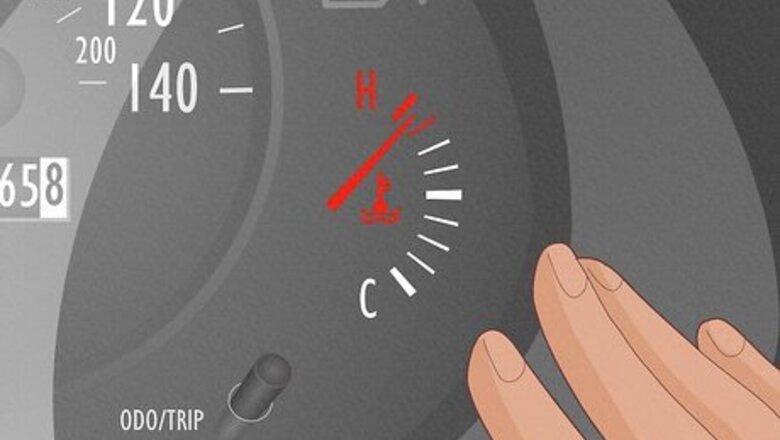
views
- Signs of low coolant include engine overheating, a malfunctioning heating or A/C system in the interior of your car, or a sweet smell coming from the vents.
- The temperature gauge on your dashboard may also point to the red, or a low coolant light on the dashboard may turn on if you lack coolant.
- Other signs include coolant leaks under your car or gray or white plumes from under the hood, which indicates a severe issue.
Signs of Low Coolant
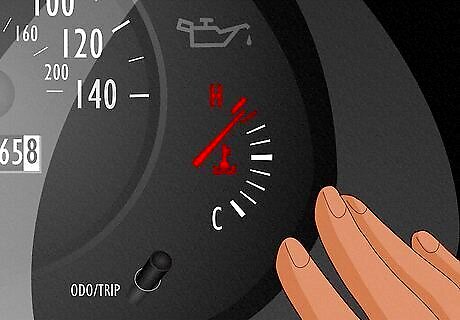
Red temperature gauge One of the most obvious signs of low coolant is the temperature gauge on your dashboard pointing to the red, meaning your car’s engine is hot, possibly because of low coolant in the system. This can cause breakdowns if not addressed promptly. Similarly, automotive repair specialist Duston Maynes says to keep an eye out for a “low coolant light” on your dashboard, which is a surer sign of low coolant.
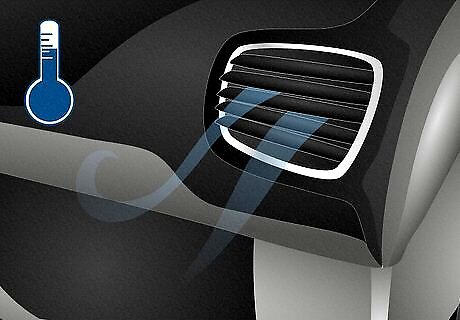
Malfunctioning heat or A/C Your car’s coolant enables the A/C system to run as it should. Without enough coolant, the fluids in your car can’t make it to the heater core, making any air that blows from the heater chilly. This might also manifest as no cool air when you try to use the A/C system.
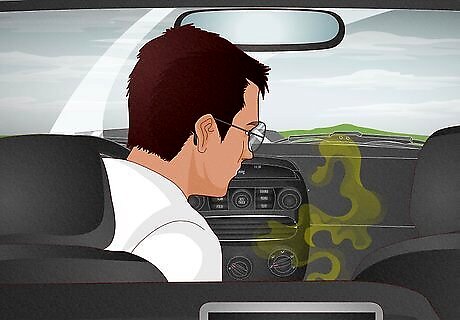
Sweet smell A sweet odor in your car’s interior is another common sign of low coolant. That’s because coolant is often made with glycol, which often has a fruity scent. Check to see if the sweet smell is coming from your A/C vents or under the hood, which may indicate a coolant leak.
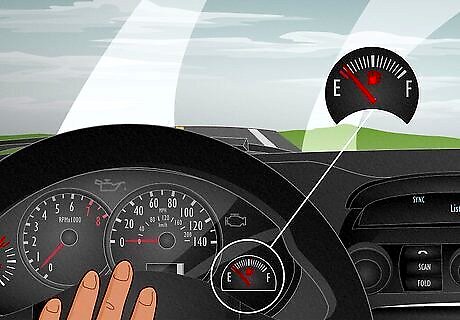
Poor fuel economy The coolant in your car’s system helps it run smoothly and efficiently. If you’re low on coolant, you might notice that your car gets fewer miles to the gallon than usual. Without enough coolant, your car may be burning more fuel than it needs to.

Coolant leaks Coolant leaks are both a cause and a symptom of low coolant. If you notice puddles of liquid forming under your car after it’s parked for an hour or two, it may be coolant leaking from somewhere in the system. Leaks may also be accompanied by faint or apparent hissing sounds in the moments after you turn off your car’s engine. Coolant comes in all colors, from blue to red to green and yellow. If the colors of your coolant brand and the liquid of the puddle approximately match, your problem may be a coolant leak. Coolant leaks often occur under the car’s engine bay, so check the ground immediately under the hood. EXPERT TIP Hovig Manouchekian Hovig Manouchekian Auto Repair & Design Specialist Hovig Manouchekian is an Auto Repair and Design Specialist and the Manager of Funk Brothers Auto, a family-owned business operated since 1925. With over 30 years of experience in the automotive industry, Hovig specializes in the process of auto repair and maintenance. He is also very knowledgeable in common automotive issues and needs including engine repair, battery replacement, and windshield accessory and maintenance. Hovig's knowledge and hard work have contributed to Funk Brothers Auto winning Angie's List Super Service Award for five consecutive years. Hovig Manouchekian Hovig Manouchekian Auto Repair & Design Specialist Act immediately if there is coolant in your transmission. Flush the transmission fluid immediately to remove contamination. Identify the leak source and see a mechanic for diagnosis and repair. Ignoring this can destroy your transmission.
What to Do If Your Coolant is Low

Add coolant if you don’t see severe symptoms like a leak. Usually, you just need to top up your coolant to fix things like finicky heating or a higher-than-usual engine temperature. To check your coolant, turn off your car and let it cool down for 20 minutes. Then pop the hood and locate and uncap your coolant reservoir. If the coolant level is below the “FILL” line, then pour in new coolant until it reaches that line. Then replace the cap. A general-purpose coolant works with most vehicles, but check your car’s owner manual to see if it specifies a particular mixture or brand. Also, flush your car’s coolant once every 2 years to keep it clean and efficient.
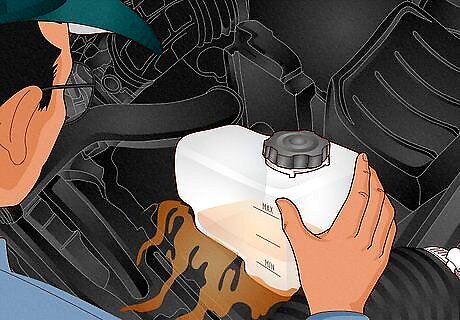
Visit a mechanic if you spot leaks or other recurring symptoms. If refilling the coolant didn’t help, you notice a persistent leak, your car seems to burn through coolant faster than usual, or your engine begins to produce white or gray plumes, low coolant levels may have damaged your engine, or you may have other serious problems that require a professional diagnosis and repair. A simple coolant leak diagnosis usually costs around $50, but more serious repairs like a hose replacement or a head gasket repair may cost hundreds or even thousands of dollars. Better to fix a small issue before it becomes a serious problem.
Risks of Driving with Low Coolant
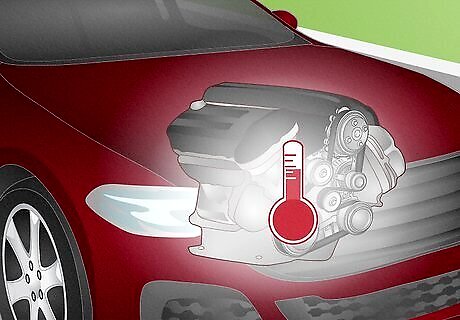
Your engine could overheat or become damaged. Coolant flows through your engine and keeps it from getting too hot or too cold. Without coolant to regulate its temperature, your car’s engine may overheat or become damaged. Driving your car while it’s overheating can lead to broken engine parts (like a costly head gasket), breakdowns, or even irreparable damage. If you notice the check engine light is on, or that there’s a white or gray vapor coming from the hood, pull over, turn off the engine, and call a mechanic for aid.

Your car’s safety override could shut down the engine. Certain newer cars have a function that automatically shuts down or prevents the engine from starting if the system detects something wrong. If your car has this function and is low on coolant, you may be unable to drive it.
Causes of Low Coolant
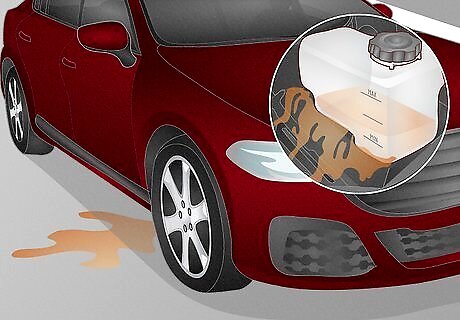
Internal or external leaks If your coolant is consistently low, even after refilling it recently, you most likely have a leak. These leaks can occur in many parts of the cooling system, including the radiator, water pump, system hoses, heater core, and engine block. Diagnosing where a leak is happening is tricky, so take your car to a mechanic for professional help.

Normal use As you use your car, the coolant in the engine naturally evaporates or becomes dirty over time, which can lead to the symptoms of low coolant. It's generally recommended that you flush and replace your radiator’s coolant every 2 years or 24,000 mi (39,000 km).
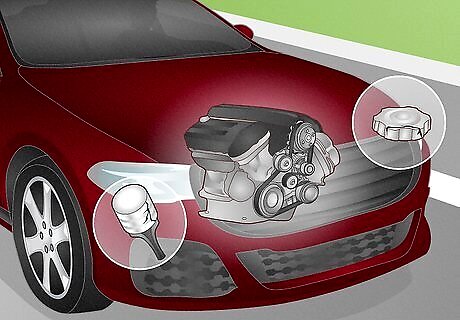
Mechanical faults A number of mechanical issues can cause low or faulty coolant systems. These include a defective radiator cap, a broken or faulty engine thermostat, broken engine blocks or cylinder heads, or head gasket damage. Many of the symptoms that point to these overlap, so it’s best to visit a mechanic for the most accurate diagnosis.


















Comments
0 comment